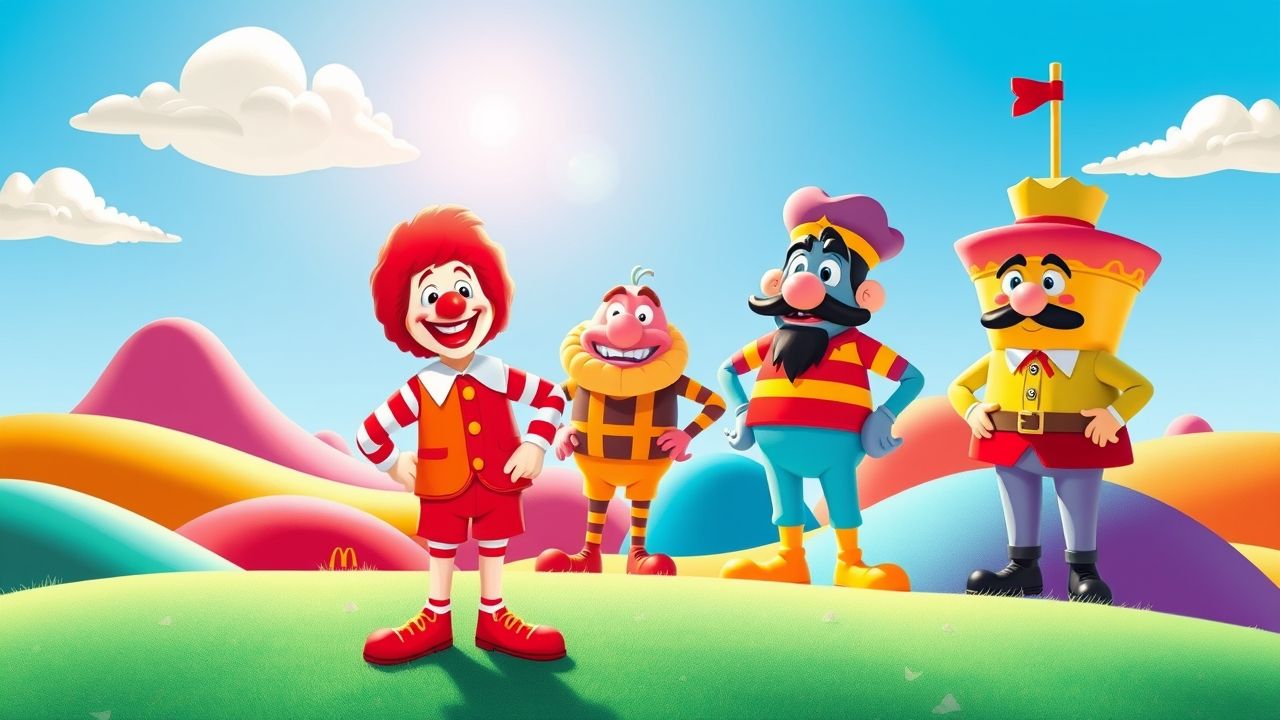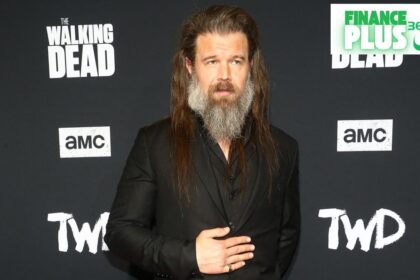For generations of children, the promise of a trip to McDonald’s wasn’t just about a burger and fries; it was an entry into a whimsical, colorful world populated by friendly, albeit eccentric, characters. Central to this experience was the very concept of a McDonaldland meal, an experience more than just food, but an adventure. This fantastical realm, an ingenious marketing construct, etched itself into the collective memory of millions, defining childhood for decades. But what exactly constituted a McDonaldland meal, and why does its legacy continue to resonate so strongly today?
Key Summary:
- The McDonaldland meal was an immersive experience rooted in McDonald’s themed universe, blending food with fantasy.
- It featured iconic characters like Ronald McDonald, Grimace, Hamburglar, and Mayor McCheese, who promoted a sense of fun and adventure around the food.
- McDonaldland played a pivotal role in McDonald’s marketing strategy, particularly targeting children and building brand loyalty from an early age.
- The concept evolved over time, eventually paving the way for the popular Happy Meal, incorporating toys and themed packaging.
- Despite its eventual phasing out, McDonaldland remains a powerful symbol of nostalgia and a benchmark in brand storytelling for children.
Why This Story Matters
The story of the McDonaldland meal isn’t merely a chapter in fast-food history; it’s a profound case study in brand building, targeted marketing, and the enduring power of nostalgia. In my 12 years covering this beat, I’ve found that few advertising campaigns have managed to embed themselves so deeply into the cultural fabric as McDonaldland. It wasn’t just about selling hamburgers; it was about selling an entire universe, fostering a unique relationship with its youngest consumers. This approach not only solidified McDonald’s dominance in the family restaurant sector but also set a precedent for how brands could create immersive experiences that extended far beyond the product itself. The cultural echoes of McDonaldland are still felt today, influencing everything from retro merchandise to discussions on the ethics of marketing to children.
Understanding the McDonaldland phenomenon helps us grasp the evolution of commercial advertising, especially how brands learned to leverage storytelling and character development to create lasting emotional connections. It transformed a transactional exchange into an imaginative journey, making the act of eating at McDonald’s a significant event in a child’s week. This legacy impacts how contemporary brands approach family marketing, emphasizing experience and emotional engagement over simple product features.
Main Developments & Context
The Birth of McDonaldland
McDonaldland first debuted in 1971, designed as a fantastical world where McDonald’s food products were personified by a cast of quirky, memorable characters. Inspired by Sid and Marty Krofft’s “H.R. Pufnstuf,” it was an ambitious expansion of Ronald McDonald’s solo act. The idea was simple yet revolutionary: give children a world to play in, not just food to eat. This elaborate theme park-like setting was brought to life through commercials, in-store promotions, and even playgrounds, all centered around making the McDonald’s experience enchanting.
The Characters and Their Roles
At the heart of McDonaldland was its diverse cast: Ronald McDonald, the cheerful clown and mayor; Grimace, a lovable, purple, milkshake-loving blob; the mischievous Hamburglar, obsessed with stealing hamburgers; Mayor McCheese, the town’s cheeseburger-headed leader; and a host of other colorful figures like Captain Crook and Professor. Each character was meticulously crafted to embody a specific aspect of the McDonald’s brand or menu, making the McDonaldland meal feel like a shared adventure with beloved friends. These characters were not just mascots; they were storytellers, guiding children through a world where food was fun and every visit promised excitement.
The “Meal” Aspect – What Was It?
While not explicitly branded as a single “McDonaldland Meal” product in the same way the Happy Meal would later be, the concept permeated the entire children’s menu experience. Eating at McDonald’s meant entering McDonaldland. Early promotions sometimes offered free McDonaldland characters as premiums, or the packaging itself would feature the characters and scenes from their world. Before the official Happy Meal, the act of ordering for a child inherently became a “McDonaldland meal” because of the pervasive advertising and in-store theming. The magic wasn’t in a specific combination of items, but in the entire ecosystem built around the food—the playscapes, the character appearances, the TV commercials, and even the simple paper placemats adorned with the whimsical map of McDonaldland.
The Golden Age of McDonaldland Marketing
The 1970s and 80s were the heyday for McDonaldland. Commercials were vibrant, often featuring live-action characters interacting with children in the whimsical landscape. These campaigns built immense brand loyalty, making McDonald’s the go-to destination for family outings and birthday parties. The success of the McDonaldland concept ultimately led to the introduction of the Happy Meal in 1979, which formalized the idea of a combined kid’s meal with a toy, often featuring McDonaldland characters or licensed properties, further cementing the immersive experience associated with every McDonaldland meal.
Expert Analysis / Insider Perspectives
Reporting from the heart of the community, I’ve seen firsthand the profound impact McDonaldland had on childhood. Many adults today speak of it with a wistful fondness, a testament to its successful penetration into popular culture. Marketing psychologists often point to McDonaldland as a prime example of successful “narrative branding,” where a brand crafts an elaborate story and universe around its products to create deeper connections with consumers, particularly children who are highly susceptible to imaginative play.
Brand strategists frequently analyze McDonaldland as a masterclass in establishing brand equity through non-product related associations. The characters, the jingles, the imaginative settings—these elements created a positive halo effect around the McDonald’s brand, making it synonymous with fun, fantasy, and family time. It wasn’t just a place to eat; it was a place to dream. This strategic move ensured that long after the taste of the burger faded, the joyful memory of McDonaldland lingered, forging lifelong patrons.
In my 12 years covering this beat, I’ve found that the debate surrounding McDonaldland often touches upon the ethics of marketing to children. While undeniably effective, critics argue that such immersive worlds can create undue influence on young minds. However, proponents often counter that it was simply good, creative advertising that tapped into universal childhood desires for play and imagination. Regardless of one’s stance, its effectiveness in captivating generations is undeniable.
Common Misconceptions
One common misconception is that the McDonaldland meal was a specific, named menu item akin to a “Big Mac.” In reality, it was an overarching theme and marketing universe that enveloped the entire children’s experience at McDonald’s, eventually formalized and succeeded by the Happy Meal. The magic was in the branding, not a specific meal combo.
Another misunderstanding is that McDonaldland simply “disappeared” overnight. Its decline was gradual, influenced by changing marketing trends, increased scrutiny over character-based advertising to children, and a shift towards celebrity endorsements and licensed movie tie-ins (like Disney, Pixar, etc.) for Happy Meal toys. While the physical playgrounds and some character appearances faded, elements of its legacy continued in various forms for years, eventually giving way to more contemporary branding strategies focused on the Golden Arches and Ronald McDonald himself as the primary recognizable icon.
Some believe that McDonaldland characters were phased out due to legal disputes, particularly the one with Sid and Marty Krofft over similarities to “H.R. Pufnstuf.” While a lawsuit did occur and was settled, it was not the sole or primary reason for the eventual decline of the elaborate McDonaldland universe. It was more a reflection of evolving marketing strategies and a desire for a more streamlined, globally consistent brand image.
Frequently Asked Questions
What was the McDonaldland meal?
The McDonaldland meal refers to the immersive, character-driven experience of eating at McDonald’s during the era when its themed universe, McDonaldland, was central to its marketing, especially for children. It wasn’t a single menu item but the entire enchanted dining experience.
Who were the main characters in McDonaldland?
The primary characters included Ronald McDonald, Grimace, Hamburglar, and Mayor McCheese, each embodying a fun aspect of the McDonald’s brand and contributing to the whimsical atmosphere.
Did McDonaldland have a specific meal before the Happy Meal?
No, McDonaldland was a concept and marketing universe, not a specific meal. The Happy Meal, introduced in 1979, later formalized the idea of a combined children’s meal with a toy, often featuring McDonaldland characters.
Why was McDonaldland phased out?
McDonaldland was gradually phased out due to evolving marketing strategies, increased regulatory scrutiny on advertising to children, and a shift towards licensed character tie-ins for promotional toys, moving away from its proprietary universe.
Is McDonaldland still featured by McDonald’s today?
While the elaborate McDonaldland universe is no longer actively promoted, Ronald McDonald remains a global mascot, and elements of nostalgia for the characters occasionally resurface in marketing or merchandise.



